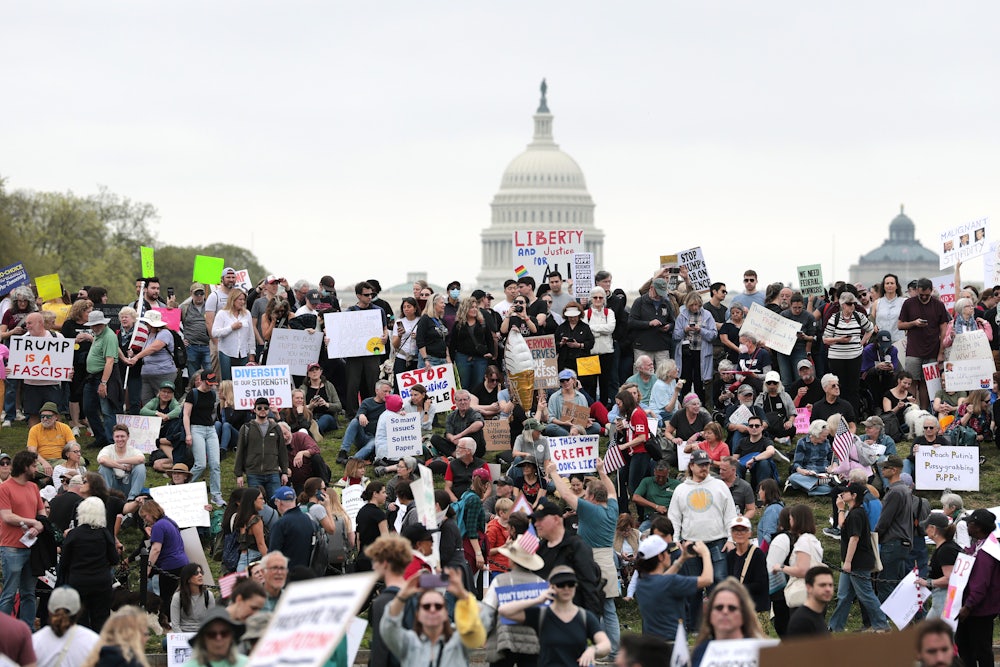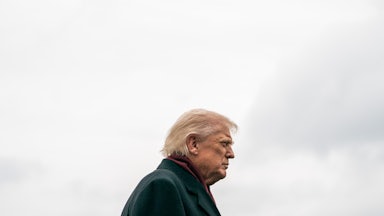On Saturday, April 5, hundreds of thousands of Americans took to the streets across the nation to protest the harmful policies of Donald Trump’s second term. The “Hands Off!” demonstrations represented what organizers called “the largest single day of protest since Trump entered office” with more than 1,100 rallies scheduled in all 50 states. From Chicago to Washington, D.C.; Asheville to Boston; Milwaukee to Louisville—people showed up in droves.
CNN reported that organizers estimated “millions” turned out coast to coast for these protests that united civil rights organizations, veterans, women’s rights groups, labor unions, and LGBTQ advocates. Even with conservative estimates, we’re talking about one of the largest mobilizations in recent American history.
But if you picked up a major print newspaper the next day? You’d barely know it happened.
The New York Times relegated the protests to an image below the fold with a caption instructing readers to turn to page 18 for more information.
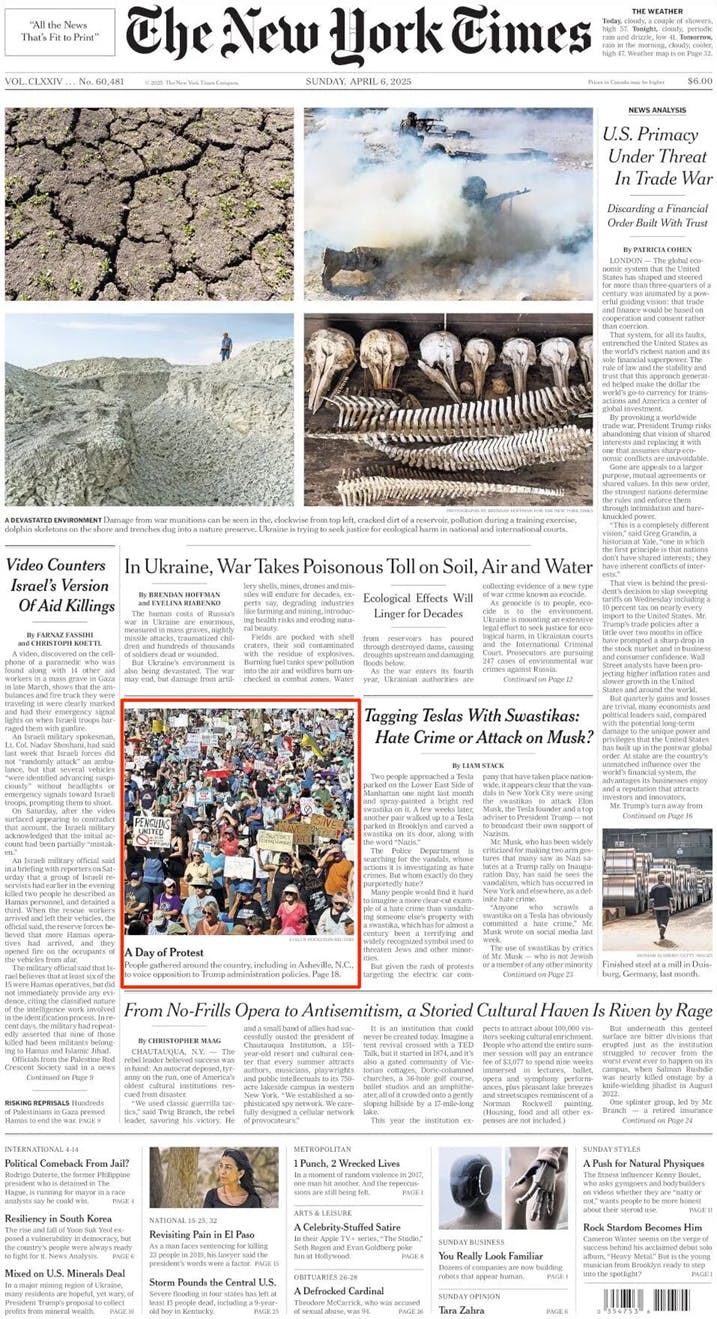
The LA Times shoved it in a tiny box in the bottom right-hand corner, sending readers to section B.
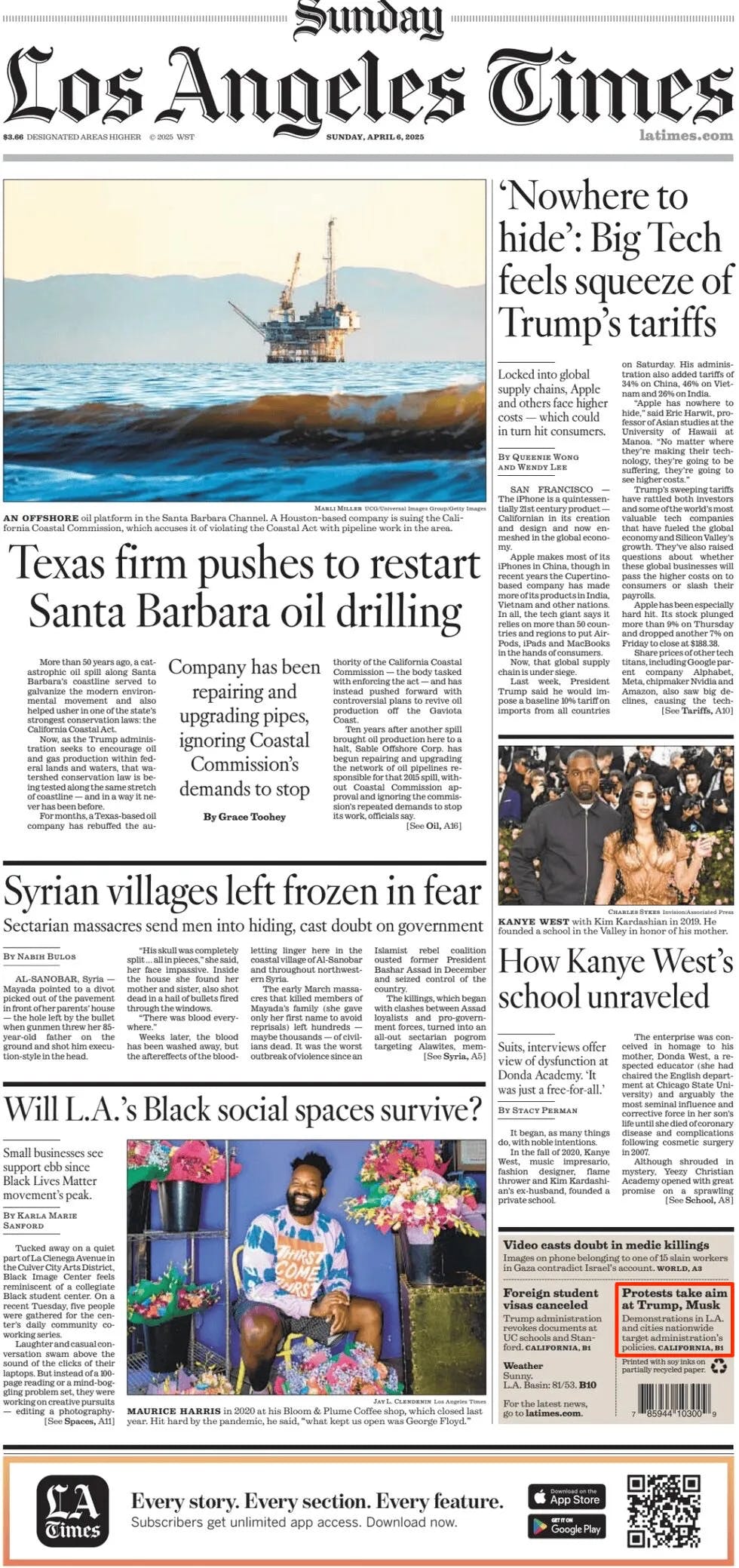
The Washington Post threw a teaser at the very bottom of its front page, directing people to the Metro section.
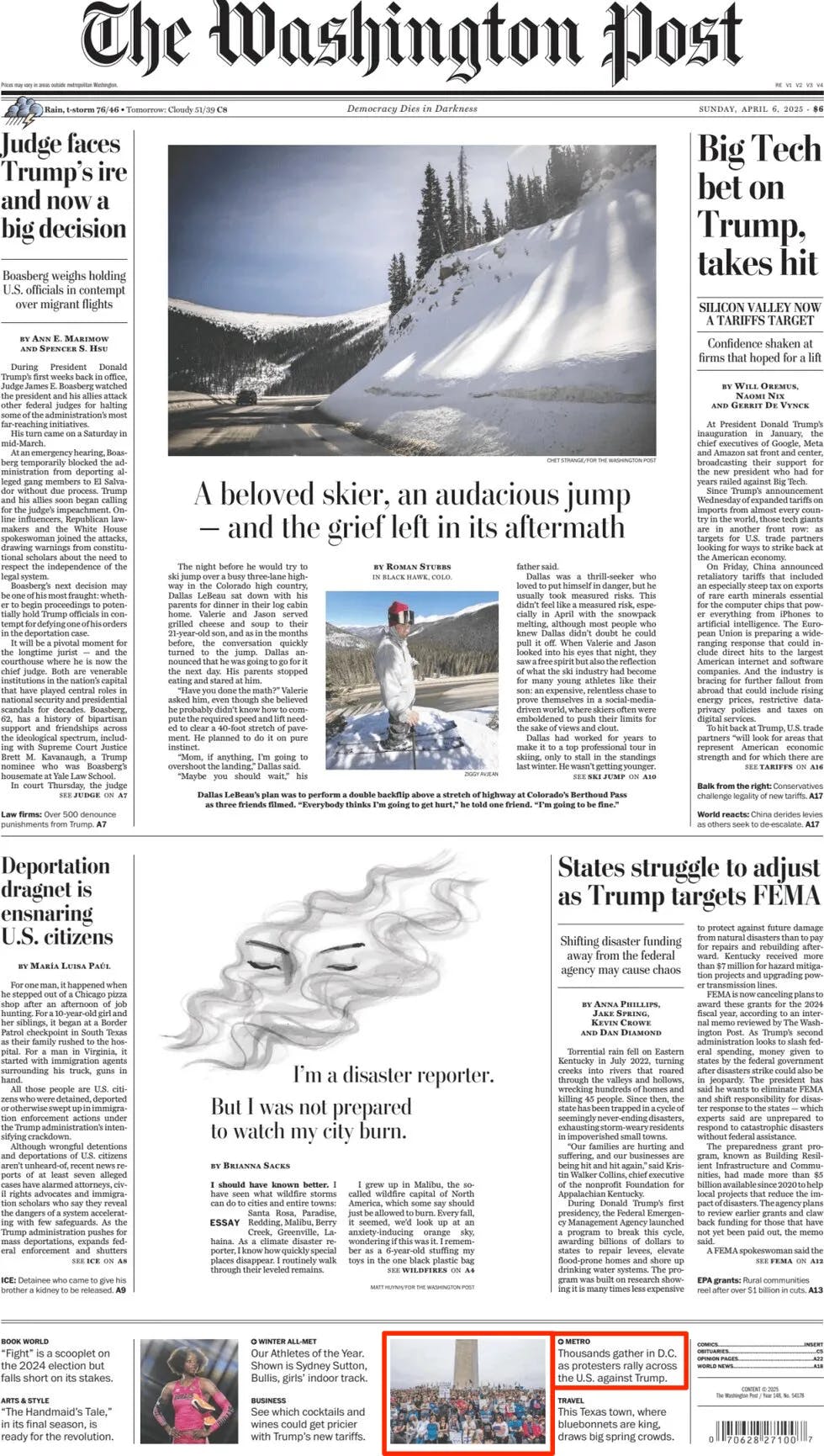
The Boston Globe managed a brief front-page callout mentioning “tens of thousands” joined marches against Trump and Musk.
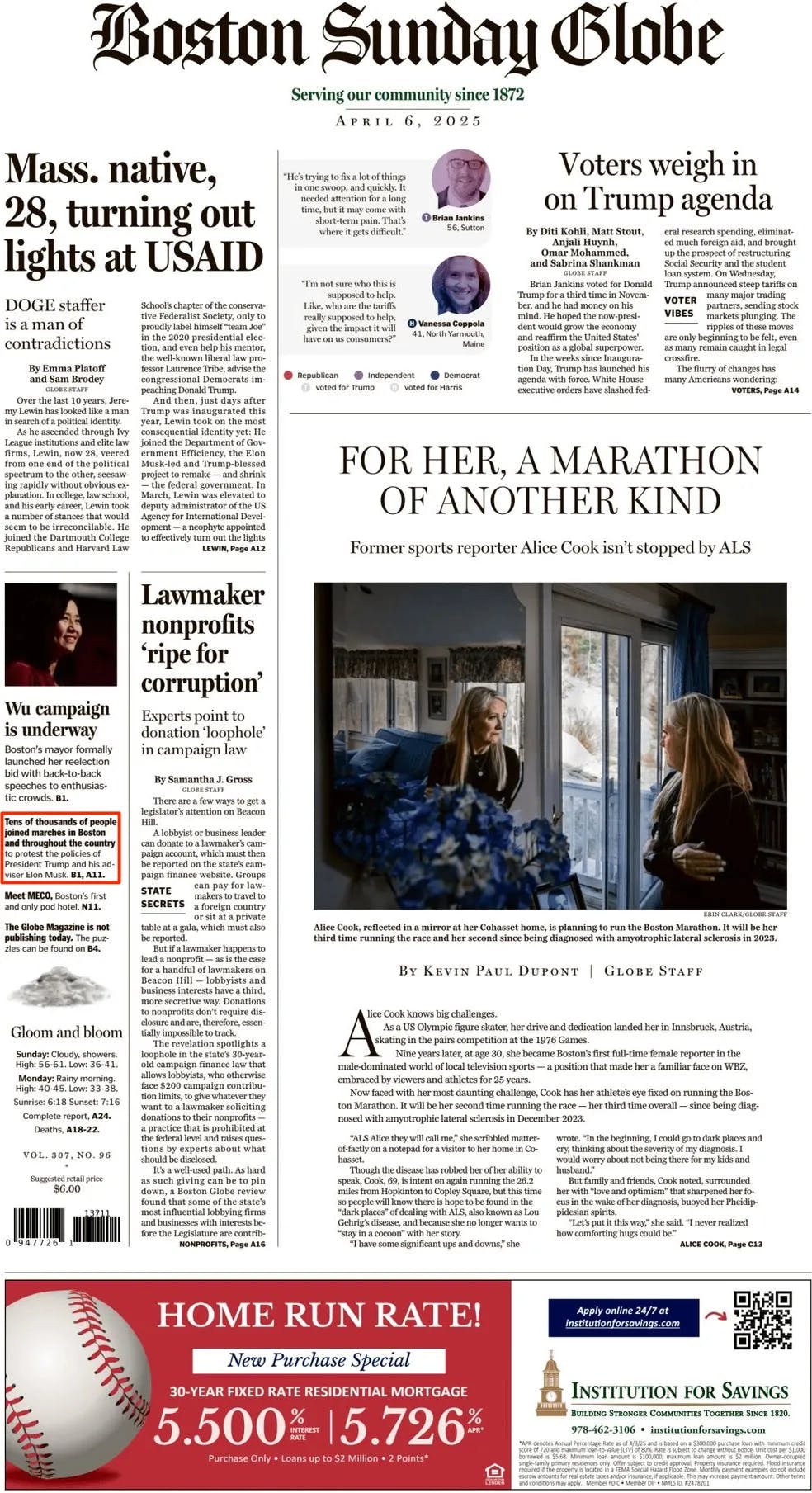
And Rupert Murdoch’s media properties? The New York Post and The Wall Street Journal made no mention whatsoever of the protests on either their April 6 or April 7 front pages. Surprise, surprise.
This isn’t just bad journalism. It’s a deliberate editorial choice that speaks volumes about how establishment media downplays collective action challenging power.
When hundreds of thousands of people coordinate across an entire nation to protest governmental policies, that’s not a page 18 story. That’s not a “see more in section B” situation. That’s front-page news. Period.
The messaging from these protests was clear and compelling. Organizers articulated specific demands: “an end to the billionaire takeover and rampant corruption of the Trump administration; an end to slashing federal funds for Medicaid, Social Security, and other programs working people rely on; and an end to the attacks on immigrants, trans people, and other communities.”
This wasn’t just a bunch of disgruntled people without purpose. This was a coordinated resistance with specific grievances and demands—exactly the kind of civic engagement our democracy supposedly values.
I understand cable news had better coverage. But print media still matters enormously for setting the agenda and signaling what deserves public attention. When papers like the Times, Post, and Journal diminish massive protests through placement alone, they’re telling readers: “This isn’t that important.”
What gets front-page treatment instead? The same recycled profiles of Trump voters in diners we’ve been reading for nine years now. The same bothsides framing that treats authoritarianism as just another policy position. Meanwhile, the actual resistance happening in real time gets buried beneath crossword puzzles and lifestyle sections.
The relegation of these protests to footnotes is more than just an editorial failure—it’s part of a broader pattern where establishment media normalizes extreme policies while marginalizing opposition. We saw it during Trump’s first term, and here we are again.
If hundreds of thousands of people gathering across all 50 states to protest doesn’t make the front page, what would? What’s the threshold? Or is the real issue that these particular protests—against billionaire power grabs, against slashing social programs, against attacks on marginalized communities—make too many publishers uncomfortable?
This isn’t about bias. It’s about basic news judgment. When print outlets bury one of the largest nationwide protests in recent memory, they’re not being neutral arbiters. They’re making a political choice about what deserves attention and what doesn’t.
